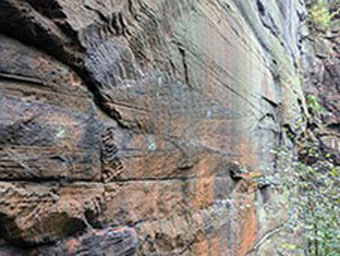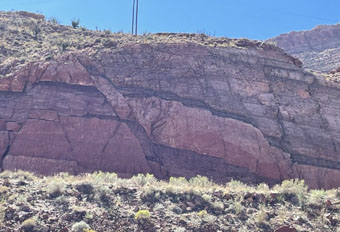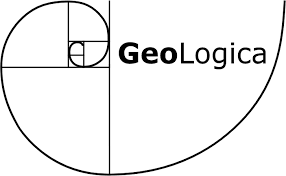Best Practices in Pore Pressure and Fracture Pressure Prediction

Date: 12-15 May 2025
Type: Virtual
Duration: 14 hours
Tutor: Richard Swarbrick
This course presents best practices in how data and standard techniques are combined to generate meaningful pore pressure (PP) and fracture pressure (FG) estimates from log, seismic and drilling data, and to use them to develop pre-drill predictions. The limitations are addressed, along with common pitfalls, leading to an understanding of the uncertainty and risk associated with PP and FG prediction.
The course begins by showing the types and reliability of subsurface data used to inform current knowledge, which will also calibrate PP and FG predictions at a remote location. Standard approaches to PP and FG prediction techniques are taught, with careful attention to where these have limitations on account of subsurface environment (thermal, tectonic) and data quality. A new approach to PP prediction using shales is taught as an independent guide to expected PP, especially valuable where only seismic data are available. Prediction of FG is taught by showing how to determine overburden stress and apply standard relationships, including new approaches with PP-stress coupling.
You will learn to:
- Distinguish the different types and quality of data that populate pressure-depth and EMW-depth plots for display of pressure predictions and calibration data in well planning.
- Use best practice to create PP estimations and predictions from seismic, log and drilling data using standard porosity-based techniques, and from modelling geological systems.
- Use best practice to create FG estimations and predictions by generating an overburden and establishing its relationship with FG and PP.
- Communicate Min-Expected-Max predictions effectively to both geoscience and engineering/operations staff involved in well planning.
Reservoir Characterisation and Subsurface Uncertainties in Carbon Stores, Cheshire, UK

Date: 19-23 May
Location: Field - Cumbria and NW Cheshire, UK
Duration: 5 days
Tutor: Richard Worden: Professor in the Department of Earth Ocean and Ecological Sciences, University of Liverpool, UK
This course will give participants the opportunity to see some of the rocks at outcrop that are planned UK CO2 storage sites and to analyze the associated range of subsurface challenges. Visiting these outcrops will allow subsurface geoscientists, who generally use logs and limited core to build models, the opportunity to see the larger and smaller scale architecture and heterogeneity of the rocks they are working on and to consider the key processes of injectivity, migration and trapping of CO2. The course will also discuss post-depositional changes to sandstones, including petrophysical and geomechanical property evolution (pre- and post-CO2 injection), and some of the risks (migration and leakage) associated with developing saline aquifers and depleted gas fields as CO2 storage sites in these sandstones.
You will learn to:
- Appraise the main depositional and diagenetic features that influence Triassic Sandstone (Bunter/Sherwood) reservoir properties and CCS reservoir development and likely performance.
- Validate the CO2 storage volumetrics from the micro (pore-scale) to the macro (aquifer volumes).
- Predict CO2 flow away from injector wells controlled by permeability and aquifer architecture with reference to injection rates and subsurface pressure.
- Assess the range of effects that CO2 can have on the host aquifer, from geomechanical to geochemical.
- Create plume migration models with respect to compartmentalization risk, pressure barriers, faults and fractures.
- Assess the role of top-seal and fault-seal properties and how they will influence CO2 storage, from risk of fracking, or induced seismicity, to mineral dissolution.
Trap and Seal Analysis: Theory and Application

Date: 23-26 June 2025
Location: Houston
Duration: 4 Days
Tutor: Russell K. Davies, Redlands Fault Geological Consulting LLC
This course introduces the concepts and methods in trap and seal analysis, particularly in relation to fault characterization, including fault mapping and fault seal, as applied to cross-fault flow resistance in traps for hydrocarbons and carbon containment in subsurface reservoirs. The course additionally includes the analysis of caprock (top seal) for predicting seal capacity and evaluating risks associated with capillary and mechanical controls. Overall, the course emphasizes the importance of an integrated approach to trap and seal analysis in subsurface reservoirs. The lectures introduce fundamentals and advanced concepts for faulting and flow for the prediction of fault behavior in subsurface traps and the concepts discussed are applied in simple exercises to reinforce learning.
You will learn to:
- Analyze fault geometries and architecture, apply this knowledge to make robust fault interpretations.
- Assess fault rock types and properties and likely impacts on fluid flow across and along faults.
- Conduct juxtaposition seal analysis and employ triangle diagrams.
- Apply algorithms, such as SGR and CSF, for predicting clay contents across faults.
- Assess the relationship between threshold pressure and fault seal capacity against the clay content predicted across fault surfaces.
- Characterize faults as potential migration and leakage pathways.
- Evaluate the geomechanical and capillary properties of top seal units.
Seals, Containment and Risk for CCS and Hydrogen Storage
Date: 13 - 17 Oct 2025
Location: Virtual
Duration: 5 Days
Tutor: Richard Swarbrick: Manager, Swarbrick GeoPressure
This course examines the nature and properties of seals as they relate to containment for permanent storage of CO2 and cyclical storage of hydrogen and/or compressed air. The course will provide a grounding in the geomechanics of seals and how seals and their properties are created in the subsurface. While most data and analysis relating to seals has been acquired from and applied to the containment of oil and gas, this course will show how such data can be applied to CCS and gas storage. Particular attention will be given to the different sealing requirements of CO2 and hydrogen relative to oil/gas and water.
You will learn to:
- Evaluate the nature of containment seals and their properties in the deep earth (>1km/0.62 miles below surface).
- Apply knowledge of seal integrity to estimates of column heights and associated storage volumes.
- Assess the concepts of seal integrity and how to predict risk of seal breach/failure.
- Appraise current knowledge of seal behaviour using case studies.
- Manage the requirements for permanent CO2 storage using CCS versus short-term/cyclic storage for hydrogen air.
- Characterize data requirements and limitations to assess seal integrity and risk (data sourced mainly from oil/gas boreholes).
- Evaluate different trapping requirements for gas storage (currently data-poor) relative to oil/gas (historically data-rich).
- How geochemical fluid-rock reactivity may impact seals to gas storage over time.
KeyFacts Energy Industry Directory: GeoLogica l KeyFacts Energy news: Training
 KEYFACT Energy
KEYFACT Energy
